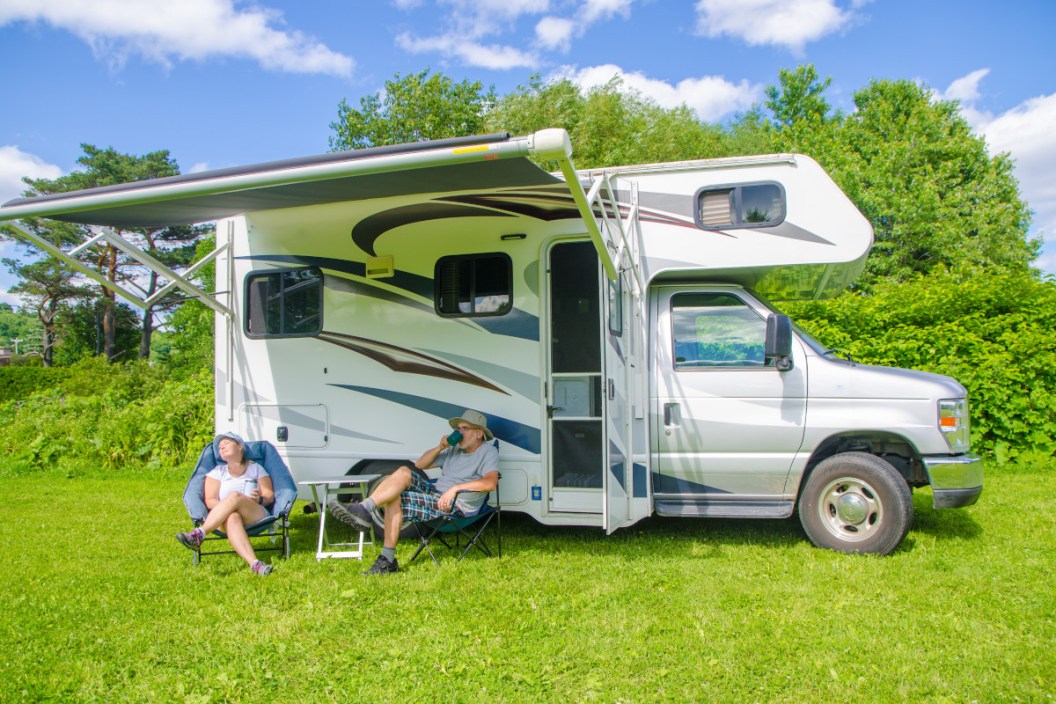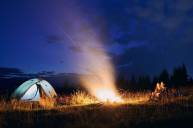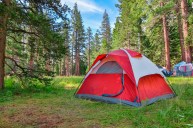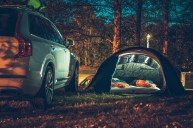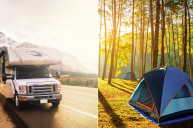There is a certain irony with today's modern campers and RVs. They pack all the modern conveniences of home into a compact space so you can feel at home even in the most remote places. At the same time, to take full advantage of an RV's features, it usually limits your camping trip to modern developed campgrounds with full electrical hookups and dump stations so you can charge your batteries, operate your pumps, and empty wastewater from your toilet and greywater tanks. While RV camping is always cheaper than a hotel, the costs can still add up after a while, especially for full-time RVers.
Plus, tons of fantastic free campsites offer excellent views and a quieter experience than you might get from the more developed areas. For most people, it is just a matter of getting over the hurdle of the idea of a dry camping experience without modern restroom facilities and electrical hookups that make life easier. Not to worry, we are here today with serious dry camping tips that will allow you to camp in comfort in areas where dump stations and fresh water is not available. These tips are not just for the usual RV park crowd either. Tent campers and van lifers can also have a more pleasant experience with proper planning.
The Difference Between Dry Camping & Boondocking
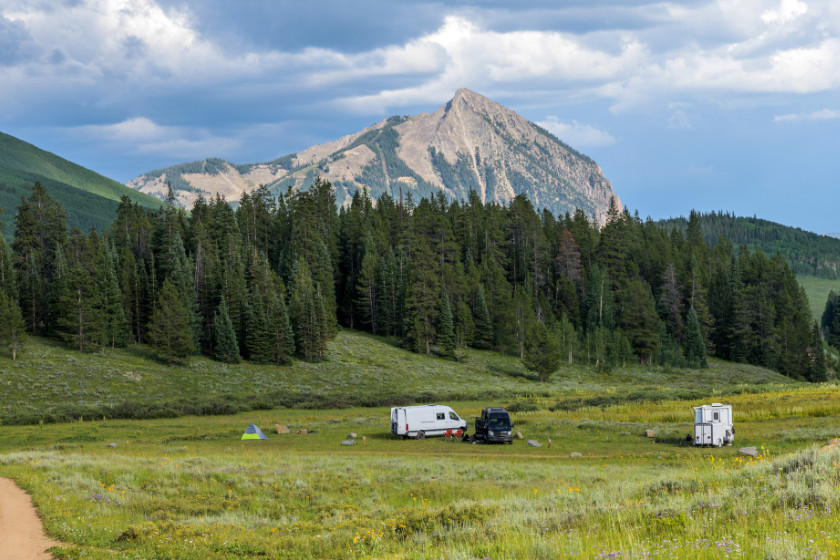
SeanXu via Getty Images
There is much confusion in the camping world when using these terms. We can also throw dispersed camping into the mix. All these terms refer to taking advantage of free campsites in State Parks, National Parks, National Forests, and Bureau of Land Management (BLM) lands. Check out our complete guide on dispersed camping for more information on locating these types of areas. The sites range from areas that can support full-size motorhomes to basic tent sites deep in the backcountry.
For the sake of this article, dry camping is any camping with no electricity, no sewer, no dump station, and no water hookup readily available. This may apply to areas designated for camping but with no structure or designated sites. It may also refer to campgrounds with simple sites with a fire ring, picnic table, and that's it. A few weeks ago, I stayed in one such rustic spot by Manistee, Michigan. You'll know it's dry camping if there is no place to empty your black tank or a central location to top off your water supply in the RV. The concept of "leave no trace" plays a big part here. You must take all your trash and wastewater with you to dispose of properly later.
It's not just campgrounds and dispersed areas, either. The idea of dry camping can also apply to situations where you're parked for the night in a Walmart parking lot or rest areas that don't have hookups. In a way, it's a slightly more challenging way to stay in the wilderness, especially if you're used to enjoying all the comforts of an RV connected to full hookups. However, most dry campers adjust quickly, and there are ways to enjoy all the features of your RV even when it isn't hooked into the grid.
Electrical Power While Dry Camping
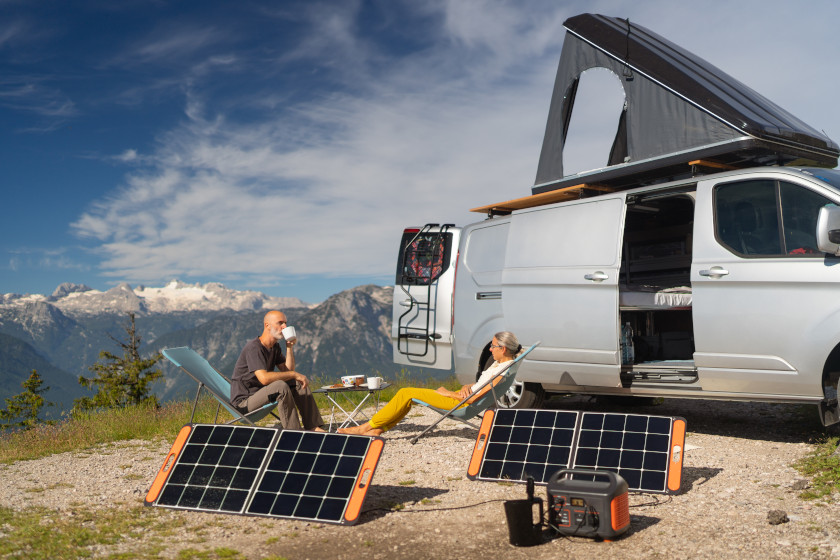
amriphoto via Getty Images
One big hurdle many campers must overcome is a lack of access to power while dry camping. If you can't hook up your RV or run an extension cord to your tent, how do you keep electronics such as your cell phone charged? Most RVs today also have electrical slide-outs, so you need to be able to operate those and your water pump, your lights, and other basics. Most RVs today come equipped with batteries that can be used for these basics. The more you have, the more you'll be able to do in rustic camping areas.
You can run a generator while dry camping, but you'll want to check an area's rules before you do that. Many established rustic campgrounds have specified "quiet hours" where you are not allowed to run a gasoline generator. Even in dispersed camping areas, it's just common courtesy. In my experience, quiet time usually starts around 8:30 or 9 p.m. So, if you're running one, use it to get those batteries charged fully, so you'll have what you need through the night.
The noisiness of generators has led to a surge in newer campers being rigged for solar power. Even older RVs can be retrofitted with solar panels that will deliver a trickle charge to the batteries when the sun is out. See our complete solar for RV guide for more information on how to do that.
If you're like me, you camp from a tent or a vehicle most of the time, and solar is still a viable option. I use the Goal Zero Boulder 100 and Yeti 500x power station to keep all my electronics up and running while camping. A ton of these lithium-ion power stations on the market solve the generator noise problem and can be recharged through 12-volt from your vehicle's battery or the sun itself. For me, they are a game changer when utilizing rustic campsites.
Water and Waste While Dry Camping

SimplyCreativePhotography via Getty Images
While electrical issues are easily solved with batteries, a generator, or a solar system, getting water while camping off-grid is more challenging, especially if you are RVing full-time. The most obvious solution is to fill your fresh water tank at home before you leave on a dry camping trip. For trips of a week or more, you'll need to monitor your usage a little more closely than you might at a developed campground with water hookups. For those without an RV, there are options. For instance, I use a seven-gallon Aqua-Tainer container. It's only about $20, and the lid inverts to form a spigot so you can use it like a gravity-fed faucet. I've often used mine to wash my cooking utensils and small packable charcoal grill. It goes much faster if you're using water as a primary drinking source or cleaning up every evening.
The hard part is refilling. You'll need to find a dump station if you're dry camping in an RV. You can't jump empty your gray tank anywhere. Even if you don't stay at them, many federally owned campgrounds will let you come in and empty your waste tanks and refill on freshwater. Look for the sign designating "drinking water" when filling your tanks. They sometimes charge a small fee for this service, but it's usually cheaper than a whole week in a modern campground.
Highway rest areas will also sometimes have free dumping and refilling stations. If you're using handheld containers, consider getting a length of hose so you can refill in a rest area sink. You'll get some looks, but it works. I've also seen truck stops with dumping and refilling stations. Sometimes they're free, and sometimes they are not. Another tip for filling containers is to look for parks and picnic areas. There's usually a spigot available. The same goes for cemeteries, although you'll want to be careful. There are often signs noting it's not fit for human consumption.
If you're using jerry cans or other water tanks to refill your RV, be aware you'll need some pump or gravity feed system to get the water into your RV tank. Most are relatively cheap at camping stores.
When none of the above options are available for gathering water, it is possible to collect it from lakes or streams. We recommend purchasing a tank that filters the water as you pump it into the tank. These aren't ideal water sources, but they'll do in a pinch when all else fails.
Showering While Dry Camping
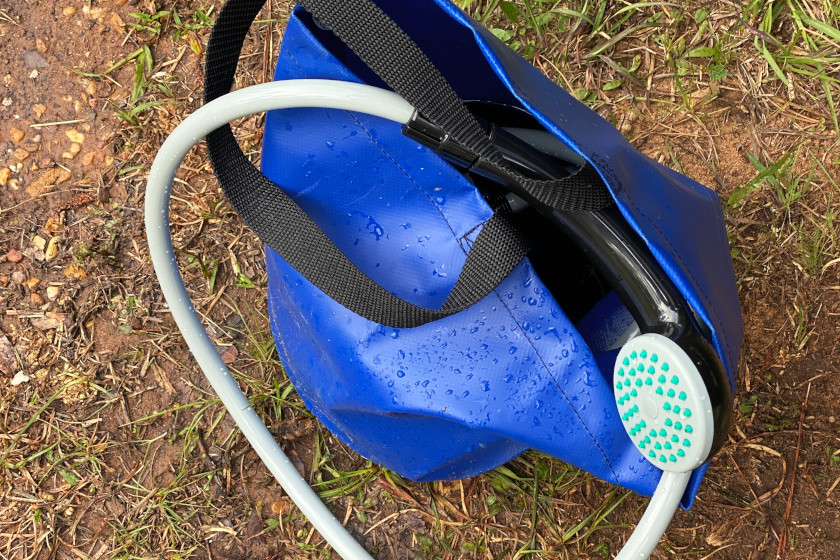
sshepard via Getty Images
Perhaps the biggest challenge to dry camping is simply staying clean. You can probably get away with a short shower if you have adequate stores in your RV's tank. You'll also need to closely monitor how quickly your gray water tank fills because there are fewer options to empty it. Other solutions exist for those without an RV or who don't want to use all the fresh water in their tanks. There are dry shampoos that can help you clean up without any water. There are also biodegradable soaps that you can safely use in nature to clean up without worrying about the usual soap chemicals harming the environment.
Many camping stores now sell small containers that dispense pressurized water using a hand pump. The downside is they go through the water quickly. I've personally used a sun shower bag several times. These are available from nearly every camping retailer and are super cheap. You can even pick up a quick pop-up shelter for privacy while using one. I will say they are not a perfect solution. The sun showers rarely heat the water beyond lukewarm. It would be best if you almost showered in the middle of the afternoon for them to be the most effective. I prefer to use them in hot weather if they don't heat properly. However, they will get the dirt, grime, and natural oils you'll pick up in nature off your body, making it easier to sleep at night without feeling filthy.
Just check the regulations for the area you're camping in. Some areas prohibit sun showers and the little pop-up shelters you can get for them. In that situation, we like to find wet or body wipes. It takes a few minutes to get most of the grime off you, so you feel comfortable, at least. Make sure to dispose of them in a trash container afterward properly.
While dry camping may seem intimidating to someone who's never done it before, it's one of our favorite ways to utilize public lands. Once you've done it a few times and figured out the logistics behind these things, it makes the whole experience much more enjoyable. You may be left wondering why you ever needed an expensive campground or modern hookups in the past.
For more outdoor content from Travis Smola, follow him on Twitter and Instagram. Check out his Geocaching and Outdoors with Travis YouTube channels for original videos.
